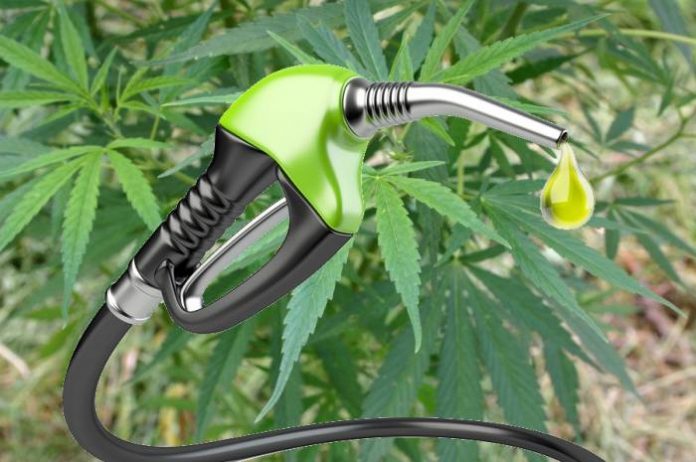Biomass can be converted directly into liquid fuels – biofuels – for our transportation needs (cars, trucks, buses, airplanes, and trains). The two most common types of biofuels are ethanol and biodiesel.
Ethanol is an alcohol, the same found in beer and wine. It is made by fermenting any biomass high in carbohydrates (starches, sugars, or celluloses) through a process similar to brewing beer. Ethanol is mostly used as a fuel additive to cut down a vehicle’s carbon monoxide and other smog-causing emissions. But flexible-fuel vehicles, which run on mixtures of gasoline and up to 85% ethanol, are now available.
Biodiesel is made by combining alcohol (usually methanol) with vegetable oil, animal fat, or recycled cooking greases. It can be used as an additive to reduce vehicle emissions (typically 20%) or in its pure form as a renewable alternative fuel for diesel engines.
Other biofuels include methanol and reformulated gasoline components. Methanol, commonly called wood alcohol, is currently produced from natural gas, but could also be produced from biomass. There are a number of ways to convert biomass to methanol, but the most likely approach is gasification. Gasification involves vaporizing the biomass at high temperatures, then removing impurities from the hot gas and passing it through a catalyst, which converts it into methanol.Most reformulated gasoline components produced from biomass are pollution-reducing fuel additives, such as methyl tertiary butyl ether (MTBE) and ethyl tertiary butyl ether (ETBE).
The renewable energy trend is pointing to a supply of BioMass. Hemp.
The basics: Hemp can provide two types of fuel.
1. Hemp biodiesel – made from the oil of the (pressed) hemp seed.
2. Hemp ethanol/methanol – made from the fermented stalk.
In this day of oil wars, peak oil (and the accompanying soaring prices), climate change and oil spills such as the one in the gulf by BP, it’s more important than ever to promote sustainable alternatives such as hemp ethanol and biodiesel. Hemp turns out to be the most cost-efficient and valuable of all the fuel crops we could grow on a scale that could fuel the world.
 To clarify further, ethanol is made from such things as grains, sugars, starches, waste paper and forest products, and methanol is made from woody/pulp matter. Using processes such as gasification, acid hydrolysis and enzymes, hemp can be used to make both ethanol and methanol. Bio-diesel is made from oils and fatty acids in plants and animals.
To clarify further, ethanol is made from such things as grains, sugars, starches, waste paper and forest products, and methanol is made from woody/pulp matter. Using processes such as gasification, acid hydrolysis and enzymes, hemp can be used to make both ethanol and methanol. Bio-diesel is made from oils and fatty acids in plants and animals.
What is Hemp Biodiesel?
Hemp biodiesel is the name for a variety of ester based oxygenated fuels made from hemp oil. The concept of using vegetable oil as an engine fuel dates back to 1895 when Dr. Rudolf Diesel developed the first diesel engine to run on vegetable oil. Diesel demonstrated his engine at the World Exhibition in Paris in 1900 using peanut oil as fuel. Even Henry Ford built his first cars to run on Bio-diesel. Hemp biodiesel comes from the pressing of the hemp seeds to extract the oil. Through a process explained here, hemp biodiesel can be made.
Hemp biodiesel can be made from domestically produced, renewable oilseed crops such as hemp. With over 30 million successful U.S. road miles hemp biodiesel could be the answer to our cry for renewable fuel sources. Learning more about renewable fuels does not mean we should not cut back on consumption but does help address the environmental affects of our choices. There is more to hemp as a renewable fuel source than you know
Why Hemp Biodiesel?
- Biodiesel is the only alternative fuel that runs in any conventional, unmodified diesel engine.
- It can be stored anywhere that petroleum diesel fuel is stored. Biodiesel is safe to handle and transport because it is as biodegradable as sugar, 10 times less toxic than table salt, and has a high flashpoint of about 300 F compared to petroleum diesel fuel, which has a flash point of 125 F.
- Biodiesel can be made from domestically produced, renewable oilseed crops such as hemp.
- Biodiesel is a proven fuel with over 30 million successful US road miles, and over 20 years of use in Europe.
- When burned in a diesel engine, biodiesel replaces the exhaust odor of petroleum diesel with the pleasant smell of hemp, popcorn or french fries.
- Biodiesel is the only alternative fuel in the US to complete EPA Tier I Health Effects Testing under section 211(b) of the Clean Air Act, which provide the thorough inventory of environmental and human health effects attributes that current technology will allow.
- Biodiesel is 11% oxygen by weight and contains no sulfur.
- The use of biodiesel can extend the life of diesel engines because it is more lubricating than petroleum diesel fuel, while fuel consumption, auto ignition, power output, and engine torque are relatively unaffected by biodiesel.
- Once the Biomass is seperated it is sent to the refinery.












